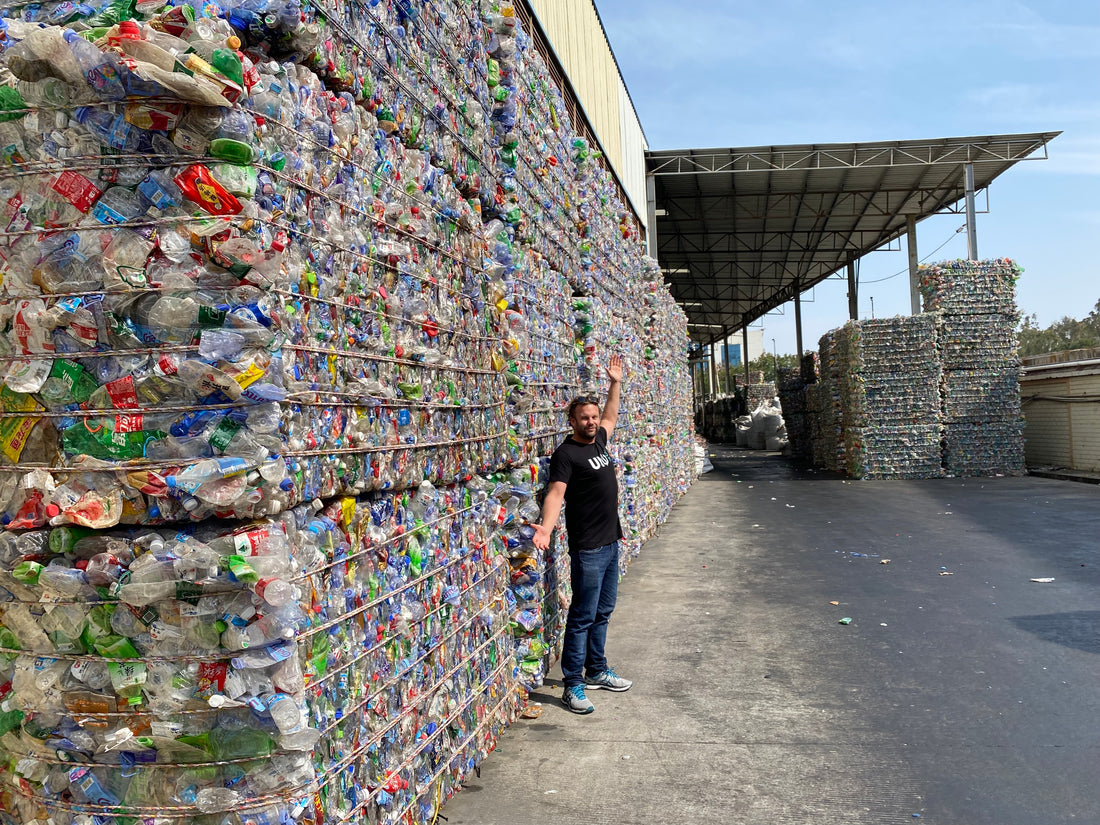
What is a supply chain?
A supply chain is how a product is made from start to finish. From the manufacture of raw materials to manufacture and then ending up in the hands of the end consumer.
How does a supply chain work for dry bags?
To manufacture our dry bags the main component is the material used to make the bag. These are the different stages the material goes through before we can manufacture: -
1 – Ocean Bound Plastics collected in Asia within 50km of the ocean. This can be from streets, rivers, beaches, mangroves or the ocean itself.
2 – The plastics are organised into different categories for recycling. Our material mostly uses PET (polyethylene terephthalate) which is the clear plastic used in single use plastic cups, drinks bottles and water bottles.
3 – Processing plant - The plastic is then often passed onto a processing plant that can grind down the flakes into small pieces. These are then washed and cleaned and turned into ‘pellets’.
4 – Yarn – the pellets are then passed to a factory where they are processed into a yarn. The yarn can be of various different thicknesses.
5 – Cloth – The yarn is then passed onto a factory where it can be spun into a cloth.
6 – TPU coating – the cloth is then covered with a TPU coating to make it waterproof and enable us to high frequency weld with it. This is where the material can become different colours and thicknesses depending on how heavy duty or lightweight a bag we are making.
7 – Manufacturer – the TPU coated material is then sent to the manufacturer to create the dry bag. Often the material will be cut into the patterns needed for manufacturer and some pieces may be sent to a printing factory for any branding and logos.
8 – Brand – the brand then receives the product ready to distribute to retailers or direct to the end consumer.
Why is scrutiny important? – greenwashing / trust
Scrutiny is important because otherwise you are going on trust. With there being so many different processes before a product goes to market the reality of how sustainable or how much recycled material is in that product is often never really known. A manufacturer may tell a brand that the material is made from recycled plastic bottles but there’s no real way of knowing whether its 100% recycled, 80%, 20% or not from recycled materials at all. Recycled PET is more expensive than virgin PET so by reducing the amount of recycled material for virgin material will increase the factories profit.
Why greenwashing and the current issues aren’t a bad thing
Why don’t believe the current issues around greenwashing are necessarily a bad thing. The more companies that are asking for sustainable products means manufacturers then seek certification or other ways to prove the authenticity of a product to get ahead of their competitors resulting in more recycled materials being used in the end.
What are the issues with scruitiny? Aunties cake – changing a recipe, businesses
The issue with scrutinising the supply chain and having traceability is as you have seen above, a material goes through many different processes and factories before it is passed on to the manufacturer. A supply chain is a bit like your aunties favourite chicken casserole recipe. The ingredients are a bit of a secret as when they are all In the right place the end product is dish that everybody loves.
Businesses often don’t want to give away their trade secrets as this is what gives them a competitive edge and they have worked hard to get there. Each step of the supply chain is also formed on relationships, trust and experience with working with one another. Trying to disrupt the supply chain or change suppliers can be met with resistance, a bit like recommending some new ingredients to that special casserole dish.
Challenges with changing the supply chain – MOQs of materials
Once the above issues with scrutiny have been overcome there are then other issues that can arise. Most of the time that comes in the form of minimum order quantities being very high. If a factory wants to make all products from OBP then an investment of 20 tonnes of material and different colours is a large but worthwhile investment. When its just one brand or business trying to take a product to market these MOQ’s can be show stoppers.

